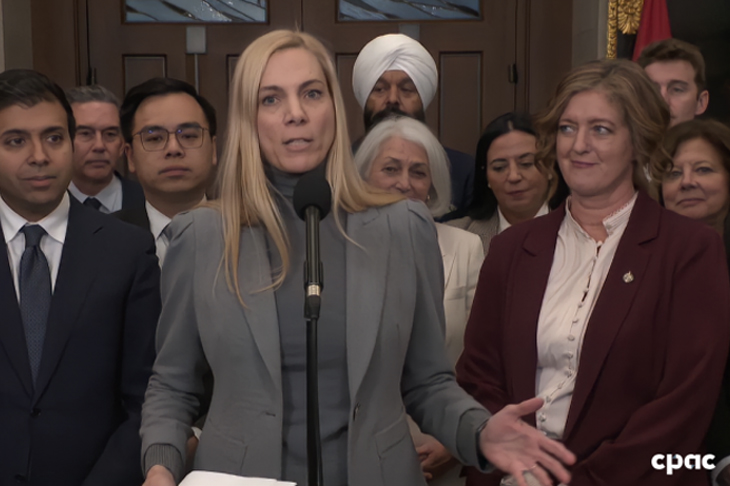Part IV in our series on rewriting the Broadcasting and Telecom Acts
THE CANADIAN TV INDUSTRY faces a growing crisis. Financial contributions from the broadcast distributors to support the production of Canadian stories are on the decline. This is combined with the fact that online TV providers, namely Netflix, aren’t required to pay into the Canadian system like their Canadian competitors.
Since Netflix has emerged as a major competitor to traditional broadcasting services, many have called for the U.S. company to being paying into the Canadian system. Some have suggested taxing internet service providers is the best approach. Others have simply said Netflix meets the definition of a broadcast distribution undertaking (BDU) and therefore should pay its fair share into the Canada Media Fund just like cable, satellite and IPTV carriers pay a percentage of their revenues.
Jay Thomson, CEO at the Canadian Cable Systems Alliance (CCSA), is concerned that all an ISP tax would do is leave less money for CCSA members to invest in extending broadband services to their small communities. “Any new policy that would divert money away from those kinds of investments we think would be a negative for Canadians, certainly the Canadians we serve,” he told Cartt.ca in an interview.
Simply forcing Netflix pay HST, some say, would help to address some of the Canadian production financing dilemma.
“I don’t understand why it has not already been addressed,” said Maureen Parker, executive director of the Writers Guild of Canada. “If any business, which we call over-the-top digital services, are operating in this country, they should be paying tax.”
A Netflix spokesperson, however, told Cartt.ca in an email that it “complies with all tax laws everywhere we operate.” (Presumably this means it would collect and remit sales tax if directed by the federal government – a federal government which has consistently resisted this move.)
With respect to contributing to the Canadian broadcasting ecosystem, the company said it’s already doing that through its investments in Canadian content and service location production. Besides, requiring financial contributions from online TV providers to the broadcasting sector in this country through regulation is unnecessary, added the spokesperson. The company pointed to the overall $8.3 billion in production spending (an all time high) in 2016/2017 as evidence that increased investments in Canadian production are happening without regulatory fiat.
“That’s a better measure of success than quotas and regulation designed for another era and different media.”
“The contributions we are making are driven by market forces and the high quality of Canada’s production industry, and that’s a better measure of success than quotas and regulation designed for another era and different media. Regulating new online media like legacy broadcasters is unlikely to work and isn’t necessary to incentivize the production of Canadian film and TV shows,” said the company. Plus, there’s that $500 million content deal the company made with Heritage Minister Mélanie Joly.
Some have suggested that since Netflix is making some Canadian content which meets CAVCO standards that it’s only reasonable to expect it to pays into the Canadian system like BDUs. The company said there’s a misconception that Netflix can receive funding from the Canada Media Fund (CMF) or production tax credits.
“As a foreign company, Netflix can’t make certified Cancon on its own. We must partner with a Canadian broadcaster or independent Canadian distributor and a Canadian producer,” the online TV provider said. “Our Canadian partners can receive money from the CMF or Cancon tax credits for the project. Netflix does not receive the funds.”
Still others have said it’s naive to think Canada can simply pigeonhole Netflix into the current system
For Brad Danks, chief executive at independent broadcaster OUTtv, it’s time to look at a different approach to bringing these online TV providers into the Canadian system. Rather than applying legacy rules to a broadcast environment that no longer exists, thanks in large part to the shift to digital and online content delivery, it might be time to simply create a new fund which the Netflixes of the world pay into – and from which Canadian content is funded.
“If you want to bring your content in, you have to adhere to certain rules which are set out in our regulations, but we as Canadians want to produce and tell our own stories and so we’re going to create a pot of money that you pay into every year and that pot we do with what we want and our commitment will be content,” he explained.
“I think sometimes we put on it constraints or protections that counter where the natural balance would lie.” – Kirstine Stewart
Kirstine Stewart, long-time broadcasting executive formerly of CBC/Radio-Canada and Alliance Atlantis, cautioned against a too-prescriptive environment, which she said would be dated and not prove to be flexible enough for new realities.
“I think obviously there are some changes that can happen within the Broadcasting Act to make it more all inclusive but the issue being – the catch 22 – is the more prescriptive you get then the more you rely on terms like ‘in any form of broadcast here and ever invented’,” she explained.
Stewart added that broadcast policy needs to be more in tune with viewer habits and choices.
“I think policy needs to be very broadly drawn, and think of the user more than of the channels that are reaching the user because I think in a lot of ways the viewers, the listeners, the users, whatever you want to call them, end up dictating by their market choice the way they want to interact with broadcast. And I think sometimes we put on it constraints or protections that counter where the natural balance would lie,” she said.
Danks noted Netflix and the other online TV services shouldn’t be viewed as the bad guys because they have simply opened the door for others to follow suit. Rather, he said, part of the solution to the Canadian content production dilemma relates to revisiting vertical integration (VI). The VI policy adopted by the CRTC has been nothing but an abject failure, he argued.
Vertical integration has made the big media and communications companies more competitive against each other but it has done nothing to make the Canadian TV industry more competitive against the U.S. services that are entering the country.
“The overall attitude towards the sector has been to starve the independents and to give everything to the VIs on the understanding that they’re going to be the ones that lead us to the promised land.” – Brad Danks
“The overall attitude towards the sector has been to starve the independents and to give everything to the VIs on the understanding that they’re going to be the ones that lead us to the promised land,” he said. “It’s not to suggest that we can’t look at greater corporate consolidation or other things but we can’t look at vertical integration, which I really think means being more competitive within the Canadian broadcasting industry, as a strategy when the world has become digital and global. And that’s the crux of the problem.”
From a consumer’s perspective, it shouldn’t be about taxing Netflix or Amazon Prime but rather incentivizing them or attempting to convince them to air more Canadian content. John Lawford, executive director at the Public Interest Advocacy Centre, suggested straight up quotas could be an effective option.
“I don’t think we’re trying to give Netflix and others a free pass. What we’re trying to say is perhaps they can be talked into, if you will, in a regulatory way of doing Canadian productions on their own and then maybe eventually someday we’ll figure out the next stage,” he said.
Part five of this series will be a feature interview with a Canadian CEO with some definitive opinions about what the new Acts should look like.
Part six will explore net neutrality and its foundational role in communications legislation.
Original artwork by Paul Lachine, Chatham, Ont.








